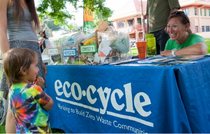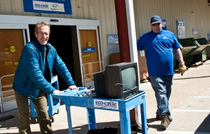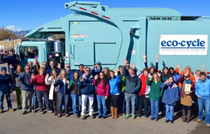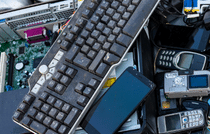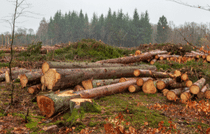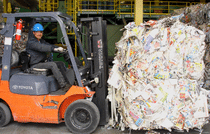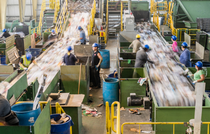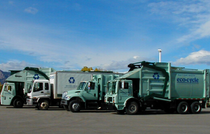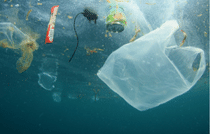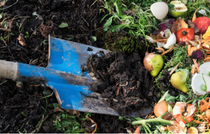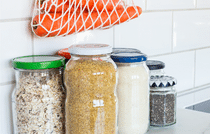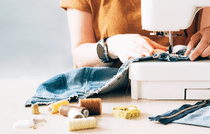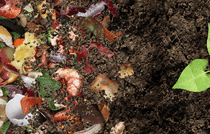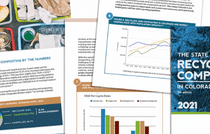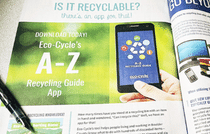From Land to Table to Landfill Part 2: The Downstream Impacts of a Plastic Fork
What does it take to make a plastic fork? More than you might think! In fact, the life cycle of a plastic fork is a reminder of the hidden health and environmental costs of convenience.
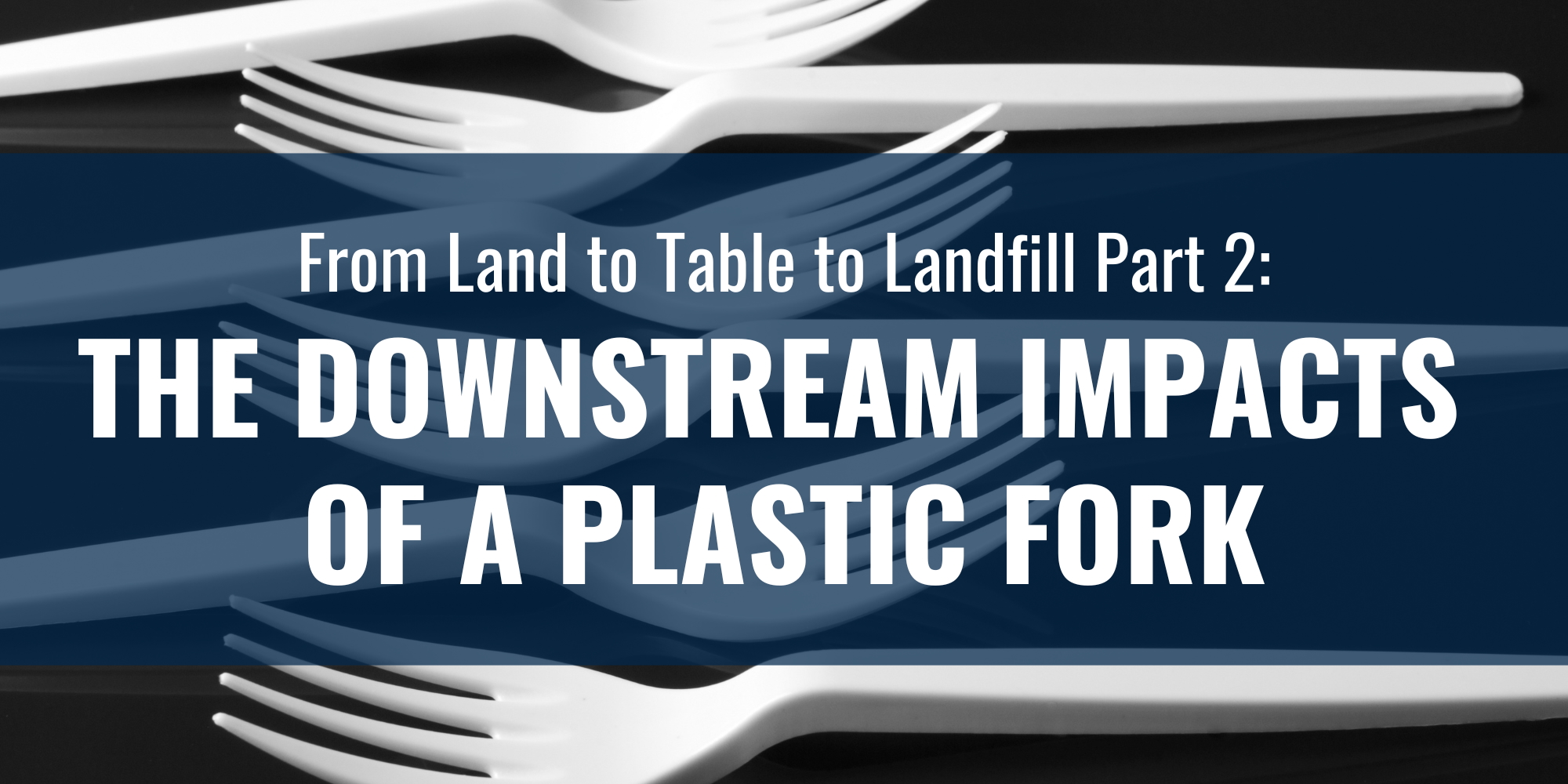
As we explored in From Land to Table to Landfill Part 1: An Analysis of the Plastic Fork’s Life Cycle, creating plastic begins with fracked gas—a fossil fuel that requires intensive extraction processes. From there, it’s refined in facilities that consume energy, emit pollutants, and contaminate local water supplies, affecting entire communities. And for what? A disposable fork is used for just minutes before it’s discarded—usually contributing to the growing pile of waste in landfills, or worse, to be incinerated or end up in the environment. Plastic forks (and most single-use plastics) aren’t recyclable, leaving us with an ongoing environmental burden for something we barely even think about.
Why isn’t my plastic fork recyclable?
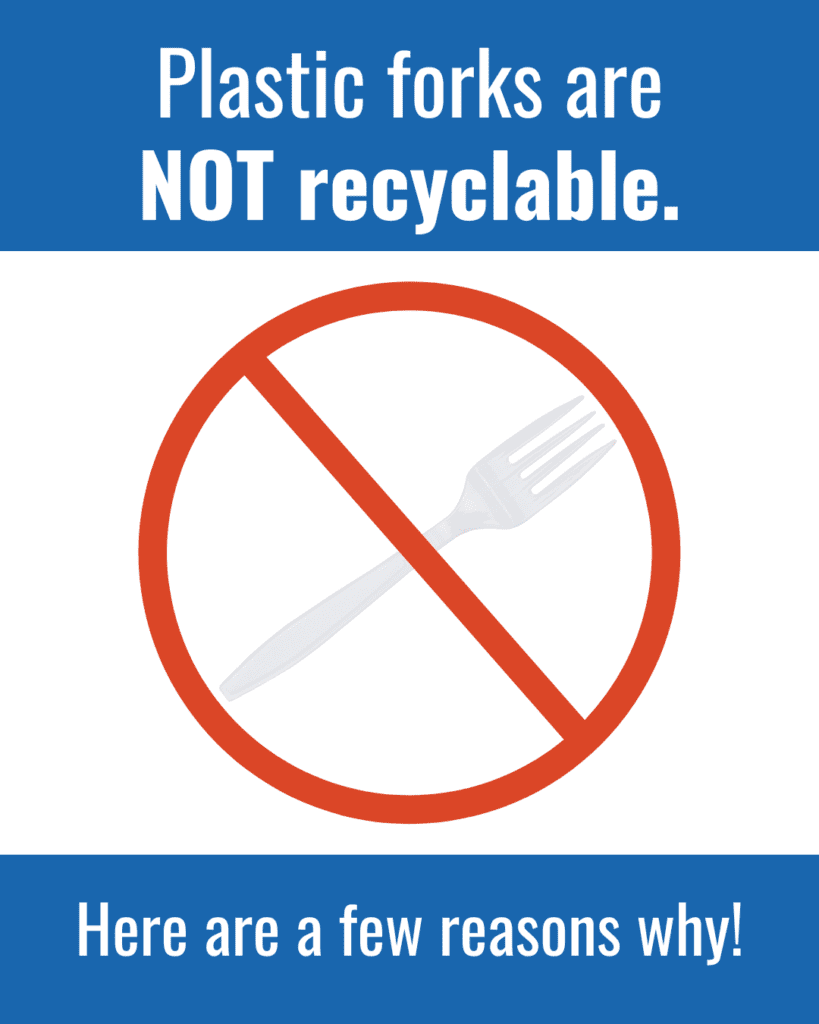
For something to be recycled, it must meet the following criteria:
- It must be designed for recovery. Some standards are also needed to ensure compatibility of the product lines for recycling (e.g., all plastic forks would be made of the same plastic resin). Right now, forks are made of two resins—polystyrene and polyethylene—which are molecularly different. Their odd shape also makes it difficult for sorting equipment at recycling facilities to separate them from other materials.
- There must be end markets, ideally created by the industry producing the item, that buy back the recycled material and are transparent about what products the material will be made into. (For example, a market that wants to buy and actually recycle plastic forks. This currently does not exist.)
- The material must be high quality enough to be recycled multiple times, even infinitely, as is the case with glass, steel, and aluminum.
- There must be cost-effective value to efficiently collect, sort, and ship the material—the sale of the material must be greater than these processing costs. There must also be sufficient market value for the material that is high enough to incentivize the market to buy and use the recycled material for remanufacturing.
Worse still, if you do put your plastic fork in the recycling cart, due to its size, it may end up getting mixed in with other streams of recyclable material and contaminating them, driving down the quality of the material and increasing processing costs.
What About Biodegradable Plastic Forks, or Plastics Made of Compostable Material?
“Biodegradable plastics” are actually a greenwashing product. They typically refer to plastic products made from both plant and synthetic material. They are even worse than fully plastic utensils because when the plant component breaks down, the synthetic elements of the fork remain and become microplastics, which are so small they easily move into our water, soils, foods, and even bodies. These plastics are not recyclable with other recyclable plastics like #1 PET and #2 HDPE because the plant components of the plastic weaken the durability of the remanufactured plastic.
Certified compostables are, in theory, better than synthetic plastic, though they take an enormous amount of water and typically petrochemicals and polluting fertilizers to grow the monocrop that is used for their manufacture. But they should not be landfilled (or even worse—recycled!). They are designed to be sent to a dedicated compost facility that accepts these types of products.
We currently do not have composting infrastructure available at scale throughout the country to facilitate their widespread use, nor the consumer awareness to ensure the right materials end up in the right bins.
We also do not have widespread labeling standards for packaging (though we do now have a Compostable Product Labeling Law in Colorado!), so there is currently a lot of misleading branding and greenwashing that is very confusing for consumers to follow. In states without a labeling bill, items may be labeled “plant-based,” “biodegradable,” or “eco-friendly,” for example. None of these labels reliably indicates if the product is certified as compostable.
Finally, any single-use item—whether certified compostable or bound for the landfill—uses many resources and harms many communities when made, and is generally used for only a few minutes.
How do we have our cake and fork, and eat it, too—without harming people and the planet? Simple: Reuse.
Reuse Is the Best Option!
Reuse is always the best option—economically and environmentally. Eco-Cycle’s Sustainable Serviceware Guide reports the average savings for small businesses switching to reusables is between $3,000 and $22,000 annually!
Choosing a reusable fork over a single-use fork, and other single-use products, saves water, reduces the amount of plastics ending up in our environment and water bodies, and reduces harm caused to people and places throughout the item’s life cycle.
So, next time you throw a party or go out to eat, consider a reusable fork over single-use!
